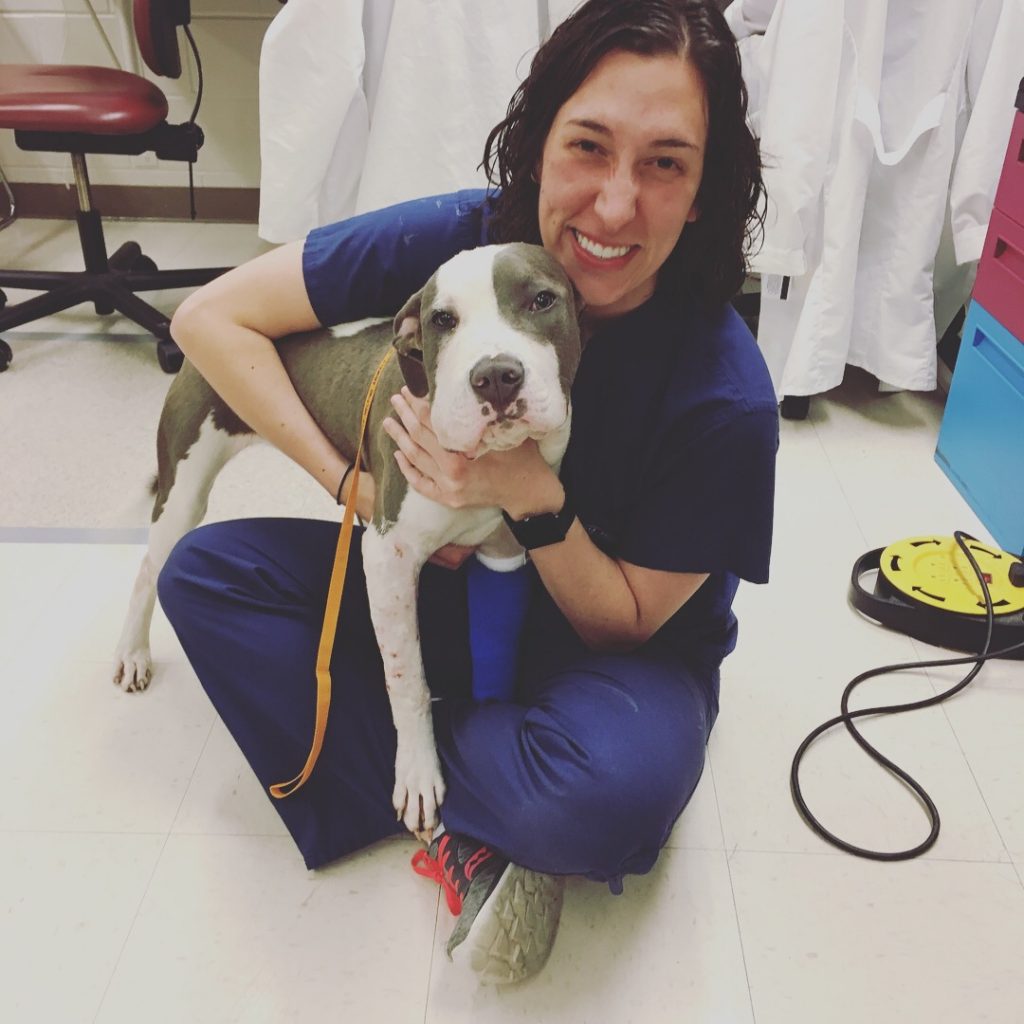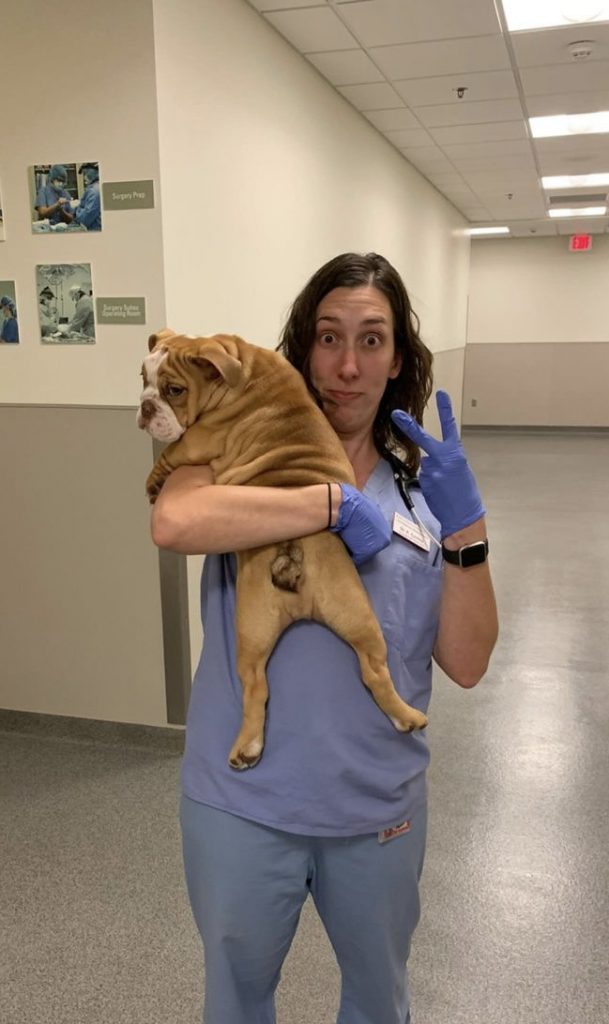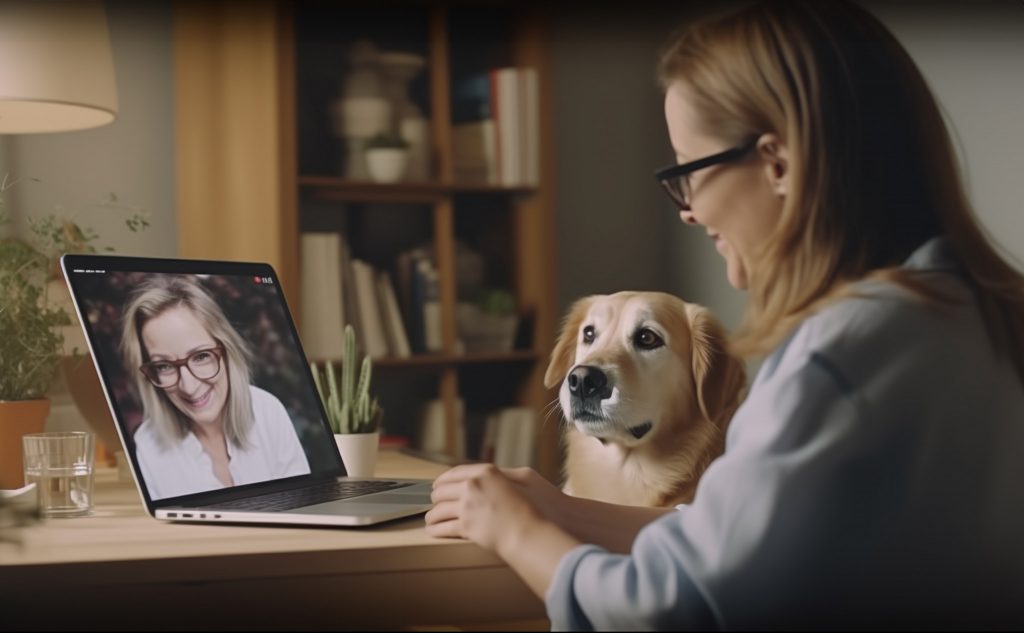
If you had asked me back when I was in veterinary school at the University of Wisconsin-Madison if I could ever imagine myself providing professional advice for sick and injured pets through telehealth consultations and never interacting face-to-face with these cats, dogs, and worried owners in person, I would have called you crazy. How would someone be able to deliver care and help anxious clients without seeing and feeling the animals live?
However, that is exactly what I do now nearly every day in my side gig as a veterinary expert online. While I still pick up occasional emergency relief shifts in a local emergency clinic, I also spend some time daily answering urgent care questions about cats and dogs (and the occasional guinea pig, rabbit, or chinchilla) during my children’s nap times or after they go to bed.
The members-only online platform1 has allowed me to work in my spare time and make a small, supplemental income. The best part is logging in whenever I want, any time of day or night, and answering as much or as little as I want.
As a primary caregiver, having a set shift would be nearly impossible for me these days. Further, general practice and emergency veterinarians are so busy these days; if I can help guide people as to whether they need to be seen by a veterinarian or if there is something they can try at home, I can hopefully save everyone a bit of time and hassle and give some peace of mind.
The road to remote veterinary work
I started out my veterinary career on a traditional path, but the desire for more flexibility as a first-time mom led me to get creative. After finishing my training, I was hired at Iowa State University as an emergency clinician. I worked full-time for almost three years until we had our daughter.
When she was seven months old, we moved back to Wisconsin to be closer to our families. With my husband’s schedule, including on-call, as well as the stressors of being a new mom and the nature of emergency and critical care (ECC) work, I decided a permanent position, even part-time, was not a good fit for me. I elected to do ER relief work in our area.

For better or worse, the demand for veterinary care has been extremely high since COVID, and picking up a handful of shifts a month that fit our schedule has been relatively easy. Joining the online platform for professional services has allowed me to answer pet owner health questions during my children’s nap times or in the evenings, after they are in bed. This has provided an extra source of income and intellectual stimulation to the ER work.
It turns out I’m far from alone as a “virtual vet.” In just the past few years, there has been a veritable explosion in the category of online, telehealth veterinary care services, driven by several factors, including the pandemic pet adoption boom.

About two in three U.S. households currently own a pet. As of 2022, there were about 86 million dogs and 61 million cats in the U.S., an annual increase of about two percent a year since 2016.2 However, given the widely reported veterinarian shortage, many pet owners are now turning to online pet health services to help their furry family members when getting appointments at the local animal clinic is too time-consuming or expensive.
So, what is it really like being a “virtual vet”?
In general, I see a lot of, “Do I need to go to a vet? We live ‘ABC’ miles from the nearest clinic,” or “I called my vet, but we can’t get in for ‘XYZ’ days.” There are also many who express concern for finances.
Over the past few years, the demand for veterinary care has exploded, and many general practitioners and emergency clinics are extremely busy and/or have lengthy wait times. I think this is where online services can be helpful in that we can help guide clients over the phone as to whether they should seek immediate veterinary care, try to schedule an appointment with their vet in the next few days, or do things they can try at home.
Many people acknowledge, “Dr. Google said this…” but are not sure if it is legitimate advice. They are almost always very appreciative of speaking with a veterinarian and at least having a plan going forward. I always defer to their primary veterinarians, but I hope, in a small way, I am easing the burden for the pet owner and their primary veterinarian.
Easily the most meaningful calls I take are related to whether someone should humanely euthanize their pet. Often, it is not what people initially call about, but after talking with them, you can feel what they want to ask. I often tell people that even when they know in their heart it might be the right time to put their furry companion to sleep, it never feels completely “right.” They often feel as if they are giving up or quitting on their pet when that is seldom the case. Most of the time, they just need someone to take the time to hear them, especially a veterinary professional, and tell them it is okay if that is what they decide.
Of course, I always offer other options if that is what they are looking for, but it is important to be in tune with people and meet them where they are. Euthanasia, as with other veterinary procedures, is such a personal decision, but I truly believe we can ease the burden for pet owners and patients.
Sometimes, a question can surprise me even after eight years in emergency veterinary medicine. Once, I was shocked to receive a call from a pet owner needing help after their dog was hit by a car the day prior. They thought their pet was dead, and so they put it in their shed overnight. The next day, the dog came limping out. The pet owners said the dog did not seem too bad except, “his leg was a little mangled.” I advised them to “Please see a veterinarian immediately. If for nothing else but an examination and some pain medications!”

What to know: keys to success in veterinary telemedicine
Telemedicine is another resource for pet owners and is also an option for many types of veterinarians (there are many questions about general veterinary care that those of us in ER are not well-versed in). Personally, it has been a great way to make a little supplemental income while not feeling like I had to complete a certain number of calls or work a set number of hours per day.
I do think it is important to remember that even though you are not physically evaluating a pet, there is still an animal and a human on the other end of the line. Without seeing the pet, you cannot diagnose or treat anything, but not rushing through a call is so important. Make sure to leave enough time so that if the conversation turns in a different direction (like the euthanasia calls I mentioned), people feel heard.
Since you do not have that face-to-face interaction, having excellent communication skills is the most important thing. Many types of veterinarians can excel on this platform, but having had clinical experience prior is extremely important because it really lays the foundation for every call or chat you take.
Katie Merkatoris, DVM, is a Madison, Wisconsin-based licensed veterinarian on JustAnswer Pets specializing in emergency care and small animal medicine. She completed both undergraduate and veterinary training at the University of Wisconsin- Madison, and following graduation in 2016, completed a small animal medicine and surgery internship at Purdue University and then an emergency and critical care (ECC) specialty internship at Iowa State University. Dr. Merkatoris is married to a large animal veterinarian and has two young children and two senior Maine Coon cats. When not practicing veterinary medicine or chasing kids, she enjoys reading, teaching group fitness classes, and red wine.
